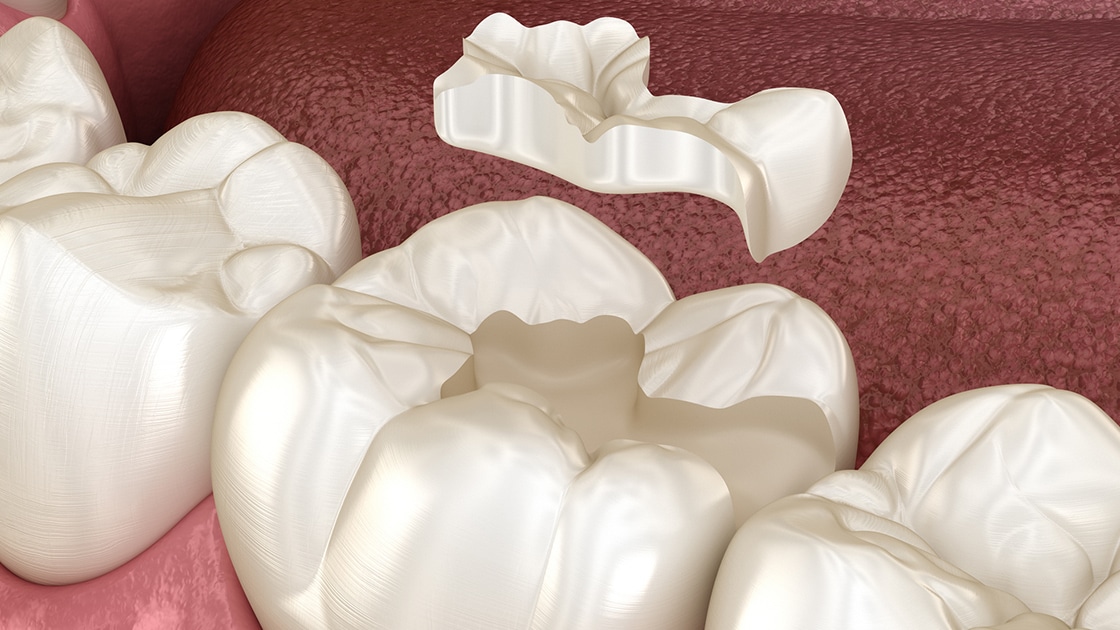
Inlays may be indicated for teeth that are too heavily damaged for a filling to restore the tooth's structural integrity, but are not badly damaged enough to require a crown or onlay.
Inlays can be thought of as a stronger filling. They are a less common dental procedure, partly because dental benefits plans generally do not include them on their covered procedures list, but also because they can be challenging to execute properly. When a damaged area gets too large for a filling, it is often more predictable to go with a crown or onlay than to do an inlay.
Inlays in the past were generally made from cast metals, commonly with high gold content. Modern inlays are typically made from porcelain or hybrid porcelain-composite materials, which can be bonded to the tooth structure and recreate a tight seal and better structural integrity than metal restorations. Compared to fillings, inlays generally last longer due to increased mechanical properties, including better wear resistance and less flexibility. Porcelain and composite inlays can be highly esthetic as they can closely match natural tooth colors.
